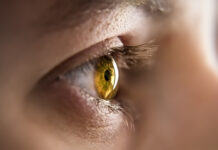Google “melatonin” and the search engine will provide nearly 2 million references at the time of writing (August 2020). These vary from factual science to the elixir of life. There is a huge literature on the multitude of effects attributed to melatonin. Recently, researchers made the enormous effort to create an “umbrella” review of reviews, from which they identified those areas where randomized controlled trials had confirmed the usefulness of melatonin. This text will attempt to provide a summary of the factual science of relevance to CET: this concerns sleep disorders.
Melatonin (N-acetyl-5-methoxytryptamine), hormone of the pineal gland, is concerned with biological timing. It is secreted at night in all species, whether day- or night-active. In humans it is thereby associated with sleep, lowered core body temperature, and other nighttime events. The period of melatonin secretion has been described as “biological night.” Its main function in mammals is to “transduce” information about the length of the night, for the organization of daylength- (seasonal) dependent changes, such as reproductive competence or hibernation. When administered during “biological daytime,” melatonin has acute sleepiness-inducing (soporific) and temperature-lowering effects, and when suitably timed, it will shift the phase of human circadian rhythms to earlier (advance phase shift) or later (delay phase shift) times. It is most effective around “biological dusk” to advance the clock and “biological dawn” to delay the clock. It thus has the properties of a chronobiotic: a drug that shifts rhythms. When correctly timed, the combination of the soporific and chronobiotic effects means that melatonin is rather effective at treating the consequences of circadian rhythm sleep disorders, notably with respect to problems of falling sleep.
Sleep is at its most refreshing when the latency to fall asleep is short and duration is long. This occurs when sleep is taken at that specific circadian phase during which melatonin is produced. One can use melatonin administration as a method to optimize circadian phase, and thus sleep.
Successful use of melatonin’s chronobiotic properties is found in sleep disorders associated with abnormal timing of the circadian system: jetlag, shift work, delayed sleep phase disorder, and some sleep problems of the elderly. It is of extraordinary help for many blind individuals, who lack the all-important light-dark time cue, and cannot maintain their internal clocks on 24h clock time. They suffer from what is called non-24h sleep-wake disorder, during which their individual (genetically determined) circadian period keeps to its own time, and “free runs,” usually slightly longer than 24h. Essentially, visually impaired people have alternating poor sleep (when the clock is in day mode during the night) and good sleep (when the clock is in night mode during the night). As the clock continues to drift to later (see Figure), poor nighttime sleep returns: an endless cycle of poor sleep-good sleep or a lifetime of intermittent jet lag. The phase shifts induced by melatonin are sufficient to synchronize to 24 h most blind subjects suffering from non-24 h sleep–wake disorder, with consequent benefits for sleep.
Here is a diagrammatic representation of such a blind person “free running.” that is, delaying to later each day. With regular administration of melatonin (red triangles) the melatonin and sleep rhythms advance to stabilize at the normal sleeping time.

Several melatonin agonists have been developed and licensed, but whether or not they are an improvement on melatonin itself as “soporific chronobiotics” remains controversial, and few, if any, direct comparisons have been published. Melatonin has been formulated as a slow release preparation and registered for insomnia of people over 55 years old. A subsection of the (large) populations studied showed a positive response. No very long term safety data exist except for anecdotal evidence, but it is considered to be safe in adults in low doses. Pediatric use of melatonin for sleep problems has covered neurodevelopmental disorders, autism, ADHD and intellectual disability, and now has expanded to more general use. According to a serious UK newspaper — The Guardian — there are safety concerns: “Despite the fact it is not licensed for use by any other age group, (other than over 55s) in the financial year 2017-2018 117,085 people under 18 were given melatonin ‘off label’.” The optimum dose and formulation for different applications remains to be clarified. Most information relates to the range 0.05 – 10 mg fast release and 2 mg slow release. In general, the advice is to use the lowest effective dose.
Josephine Arendt PhD, Faculty of Health and Medical Sciences, University of Surrey, Guildford, United Kingdom, is a pioneer and international leader of circadian research in many domains: she developed the first radioimmunoassay for the pineal hormone melatonin, and investigated its physiological role, chronobiotic effects and the role of light in a number of species. Important studies showed how blind individuals with recurring bouts of poor sleep due to their rhythms no longer being synchronized, could be effectively treated with melatonin.






